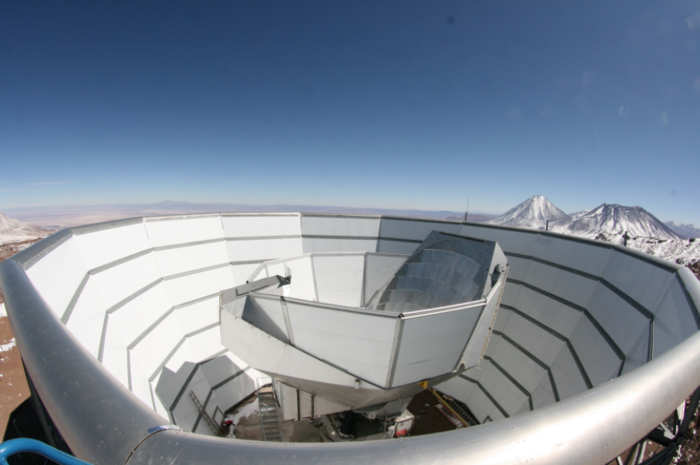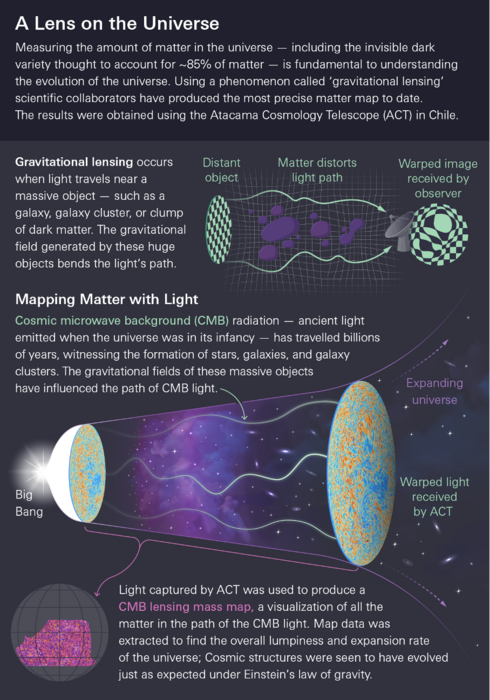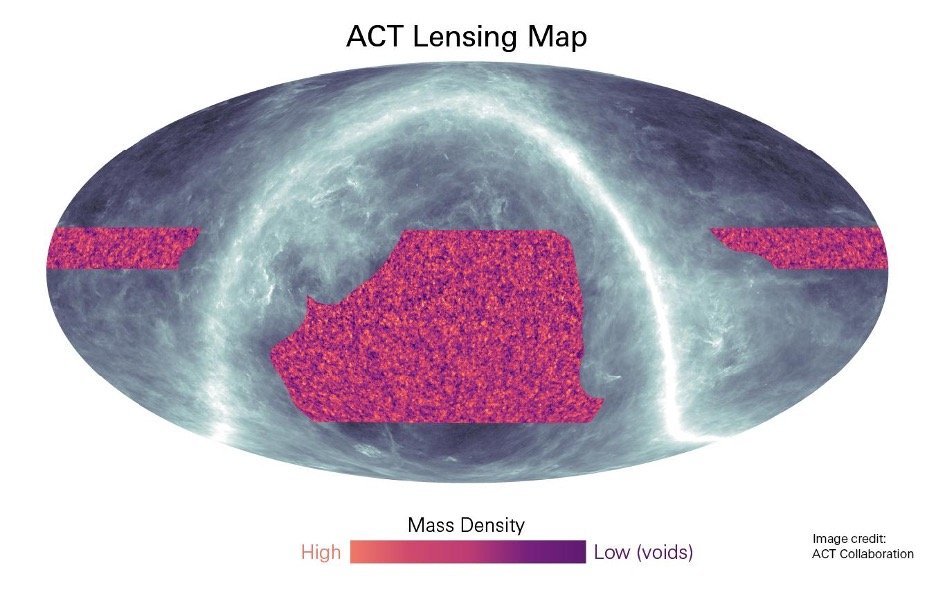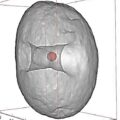A new map detailing what the creators call one of the great “mysteries of the cosmos” offers strong support for Einstein’s theory of gravity, a concept placed under scrutiny in recent years due to conflicting results in the universe’s expansion known as the Hubble Tension.
However, this newest, most detailed representation of nearly a quarter of the entire sky, which shows the effects dark matter has on the universe’s light, is almost perfectly aligned with the theoretical models based on Einstein’s equations.
Dark Matter Research Explores One of the Universe’s Great Mysteries of the Cosmos
“For millennia, humans have been fascinated by the mysteries of the cosmos,” opens the press release announcing the new findings. Of course, the release goes on to note that unlike previous generations of humans that were limited to the breadth of their imaginations to try to find answers, modern cosmologists have a great number of practical tools available to them. And in cosmology, there is probably no bigger mystery than the theoretical stuff scientists call “dark matter.”
Dark matter is still theoretical since it only seems to interact with gravity while somehow avoiding nature’s other electromagnetic forces. Its lack of interaction with light gives the stuff its name since dark matter is something we cannot directly observe. Still, observations made by cosmological tools that show the effects of dark matter are increasingly lending support to its existence.
The latest salvo in favor of dark matter is an effort undertaken by researchers from the Atacama Cosmology Telescope (ACT) collaboration, which set out to map a truly massive amount of the known cosmos. This includes the shape, location, and distribution (or “lumpiness”) of the elusive dark matter. And based on their results, the models of gravity first proposed by Albert Einstein almost a century ago are proving to be surprisingly accurate, especially given the tools of his time.
Drawing a Map of the cosmic microwave background radiation
To draw a map of over a quarter of the sky in such expansive detail, these “cosmic cartographers” collected data gathered by over 160 of their colleagues using the Atacama Cosmology Telescope. Perched high up in the Andes Mountains of Chile, the ACT measures the light emitted just a few hundred thousand years after the big bang. It is known formally as Cosmic Microwave Background Radiation.


By collecting and quantifying observations of this extremely ancient light, astronomers can track the changes it has undergone in the approximately 14 billion years since. The result of those changes is shown in their incredibly precise map, including the effects that the gravity from dark matter has exerted on the CMB over that vast amount of time.
“We have mapped the invisible dark matter across the sky to the largest distances and clearly see features of this invisible world that are hundreds of millions of light-years across,” explained University of Cambridge professor of cosmology Blake Sherwin, who leads a group of ACT researchers at his campus. “It looks just as our theories predict.”
Those theories are based in no small part on the ideas of famed genius Albert Einstein. In particular, Einstein’s theory of gravity laid out in the standard model of cosmology, drove the models that were used to predict what the distribution of dark matter across the known universe would likely look like. And, as noted by Professor Sherwin, the theoretical models and the map made from real-world measurements are essentially a perfect match.
“We’ve made a new mass map using distortions of light left over from the Big Bang,” explained Mathew Madhavacheril, an assistant professor in the Department of Physics and Astronomy at the University of Pennsylvania. “Remarkably, it provides measurements that show that both the ‘lumpiness’ of the universe and the rate at which it is growing after 14 billion years of evolution are just what you’d expect from our standard model of cosmology based on Einstein’s theory of gravity.”


Einstein’s Theory of Gravity Wins Again
This new map is not only an incredible achievement, but it also comes at a time when other cosmological measurements have been somewhat in conflict with Einstein’s predictions. Most notably, the measurement of light emitted by stars as opposed to galaxies taken in large part by the Hubble Space Telescope seem to be in conflict with each other, effectively putting Einstein in doubt. This new map looks likely to tip the scales back in favor of Einstein, essentially offering solid support for his solutions to one of the great mysteries of the cosmos.


“When I first saw them, our measurements were in such good agreement with the underlying theory that it took me a moment to process the results,” says Cambridge Ph.D. student Frank Qu, who was part of the research team. “It will be interesting to see how this possible discrepancy between different measurements will be resolved.”
Of final note, the researchers point out that this is the type of work that can only be accomplished with the best equipment operated by some of the most qualified researchers, regardless of Einstein’s impressive imagination. However, when those things come together, all humanity gains.
“When we proposed this experiment in 2003, we had no idea the full extent of information that could be extracted from our telescope,” says Mark Devlin, the Reese Flower Professor of Astronomy at the University of Pennsylvania and the deputy director of ACT.
“We owe this to the cleverness of the theorists, the many people who built new instruments to make our telescope more sensitive, and the new analysis techniques our team came up with,” Devin added.
Christopher Plain is a Science Fiction and Fantasy novelist and Head Science Writer at The Debrief. Follow and connect with him on Twitter, learn about his books at plainfiction.com, or email him directly at christopher@thedebrief.org.

